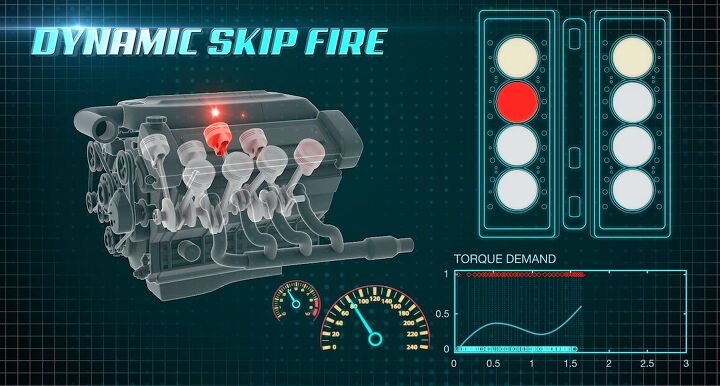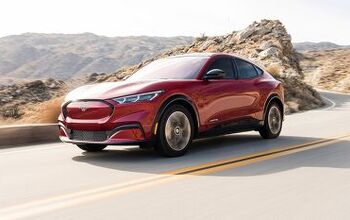GM Banking On Dynamic Cylinder Deactivation For Improved Fuel Economy
General Motors has played with cylinder deactivation technology since the days of Carter, sometimes successful, sometimes with more disastrous results.
With Tula Technology’s Dynamic Skip Fire, GM is banking on the former.
The technology — a result of the automaker’s 2012 equity investment in the startup via GM Ventures — uses “advanced digital signal processing with sophisticated powertrain controls to create a software-based approach to variable displacement engines.” This allows for a dynamic approach for cylinder management, with individual cylinders to be activated or deactivated on a case-by-case basis while maintaining proper torque at all speeds/loads and avoiding vibration issues.
GM believes employment of DSF could improve fuel economy among its various models by as much as 15 percent compared to other cylinder-deactivation methods, such as its Active Fuel Management system used by the likes of the Chevrolet Silverado and GMC Sierra, among others.
As for when DSF might appear, Tula CEO R. Scott Bailey couldn’t say much about the timeline, but that his investor views the technology as “production worthy,” per an interview with Autoblog. Other investors in Tula include Sequoia Capital, Sigma Partners and Khosla Ventures.
Seattle-based writer, blogger, and photographer for many a publication. Born in Louisville. Raised in Kansas. Where I lay my head is home.
More by Cameron Aubernon
Latest Car Reviews
Read moreLatest Product Reviews
Read moreRecent Comments
- Analoggrotto Does anyone seriously listen to this?
- Thomas Same here....but keep in mind that EVs are already much more efficient than ICE vehicles. They need to catch up in all the other areas you mentioned.
- Analoggrotto It's great to see TTAC kicking up the best for their #1 corporate sponsor. Keep up the good work guys.
- John66ny Title about self driving cars, linked podcast about headlight restoration. Some relationship?
- Jeff JMII--If I did not get my Maverick my next choice was a Santa Cruz. They are different but then they are both compact pickups the only real compact pickups on the market. I am glad to hear that the Santa Cruz will have knobs and buttons on it for 2025 it would be good if they offered a hybrid as well. When I looked at both trucks it was less about brand loyalty and more about price, size, and features. I have owned 2 gm made trucks in the past and liked both but gm does not make a true compact truck and neither does Ram, Toyota, or Nissan. The Maverick was the only Ford product that I wanted. If I wanted a larger truck I would have kept either my 99 S-10 extended cab with a 2.2 I-4 5 speed or my 08 Isuzu I-370 4 x 4 with the 3.7 I-5, tow package, heated leather seats, and other niceties and it road like a luxury vehicle. I believe the demand is there for other manufacturers to make compact pickups. The proposed hybrid Toyota Stout would be a great truck. Subaru has experience making small trucks and they could make a very competitive compact truck and Subaru has a great all wheel drive system. Chevy has a great compact pickup offered in South America called the Montana which gm could make in North America and offered in the US and Canada. Ram has a great little compact truck offered in South America as well. Compact trucks are a great vehicle for those who want an open bed for hauling but what a smaller more affordable efficient practical vehicle.


































Comments
Join the conversation
Are they going to use that new gauge design in the photo for the ATS?
What is the advantage of this over forced induction, where the blower can create a higher 'virtual' displacement as needed. It would seem that more displacement and forced induction are two ways to do the same thing (bring in more air, adding more fuel to keep the ratios in line, and gaining more power as a result.) The V8-6-4 was a good concept that GM fumbled on implementation. The same goes for turbocharging and all-aluminum blocks (F-85 Rocket V8).